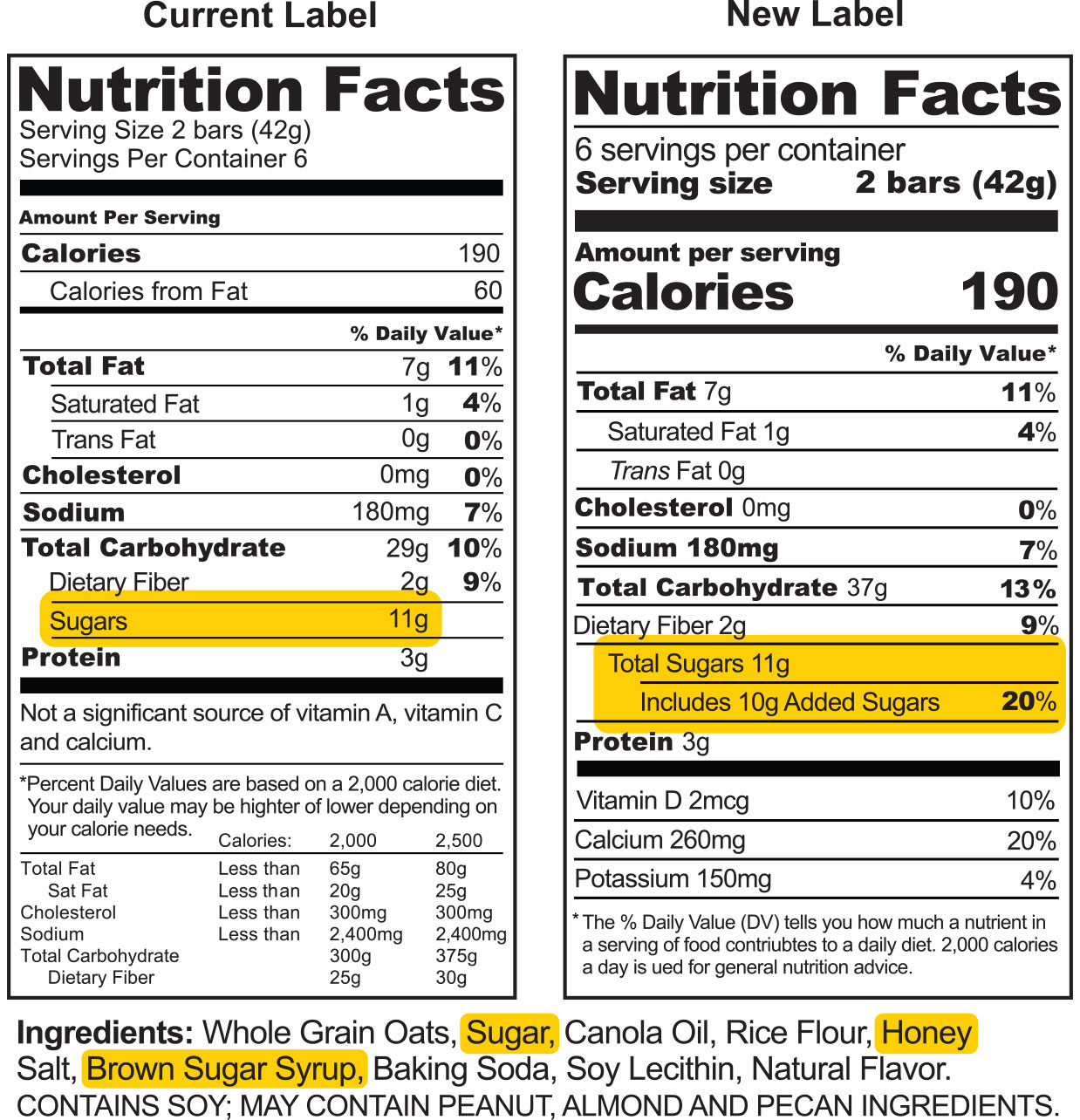
Currently, the Department of Health and Human Services (HHS) and the Department of Agriculture (USDA) are in the process of updating the Dietary Guidelines. The guidelines provide scientifically sound advice on how to eat healthfully and help prevent chronic diseases. They have an influence on how Federal government's food programs will be developed. They are also used to guide the development and implementation of nutrition education, food labeling, and public feeding programs in the United States. The guidelines apply to the general public, people with chronic diseases, and people with special nutritional needs.
The Dietary Guidelines are based on the best available scientific evidence. This advice is updated periodically, and reexamined for accuracy. Nutrition scientists, epidemiologists, and other experts are required to participate in the development process. The Dietary Guidelines Advisory Committee reviews the guidelines. To make these recommendations practical, the committee uses national data sets.
In developing dietary guidelines are several factors taken into account, including the effect of food and beverages on human health, environmental concerns, and preservation and promotion of traditional cuisines. Increasing consumption of foods high in saturated fat, refined carbohydrates, and added sugars has a profound impact on the body. According to the dietary guidelines, sugar consumption should be limited and fruits and vegetables should be eaten more. They recommend eating whole grains and low-fat milk products.

These guidelines can be used by a wide range of people, such as nutrition educators, health professionals, federal nutrition program administrators, and the general public. They provide guidelines on food labeling and dietary choices to best meet the nutritional requirements of the public. They should also contain policies to ensure that healthy diets are long-lasting and sustainable.
Every five years, the guidelines are revised. These guidelines are regularly updated to reflect current science and promote health and prevent chronic disease. Public health professionals and policymakers can use the guidelines as a reference. The most important recommendations include limiting added sugars and salt, increasing physical activity, and eating a variety of fruits, vegetables, among others. They are also aimed at reducing the risk of chronic diseases such as cardiovascular disease and type 2 diabetes.
The Dietary Guidelines Advisory Committee meets six time to review scientific evidence regarding specific topics. It submits its report to HHS. The latest report by the committee was published February. The Dietary Guidelines Advisory Committee consists of 11 to 15 experts. These experts assist in reviewing the latest scientific evidence and making recommendations.
The development of the Dietary Guidelines takes many years. HHS invites public comments about the proposed scientific issues in addition to scientific reviews. These comments will help to decide which scientific questions will go into the final dietary guidelines.

Over the years, the Dietary Guidelines process has changed to reflect changes in science, public health, best practices in scientific reviewing, and other factors. USDA and HHS made major changes recently to make the guidelines more transparent and increase public participation.
FAQ
What is the difference of fat and sugar?
Fat is an energy source that comes directly from food. Sugar is a sweet, naturally occurring substance in fruits and vegetables. Both sugars and fats have the same calories. However, fats provide more calories than sugars.
Fats are stored within the body and can contribute to obesity. They cause cholesterol buildup in arteries which may lead to heart attacks and strokes.
Sugars provide instant energy and are rapidly absorbed by the body. This causes blood glucose levels to rise. High blood glucose levels can be dangerous because it increases the risk of developing type II diabetes.
What does it take to make an antibiotic work?
Antibiotics are drugs that destroy harmful bacteria. Antibiotics can be used to treat bacterial infection. There are many different types of antibiotics. Some are taken orally, some are injected, and others are applied topically.
Antibiotics are often prescribed to people who have been exposed to certain germs. For example, if someone has had chicken pox, he or she might take an oral antibiotic to prevent shingles later on. A penicillin injection might be given to prevent pneumonia in someone who has had strep.
Children should not be given antibiotics without the consent of a doctor. Side effects of antibiotics can be more dangerous for children than for adults.
The most common side effect of antibiotics is diarrhea. Other side effects that could occur include nausea, vomiting and dizziness. These symptoms usually go away after treatment ends.
What's the difference between a calorie and kilocalorie?
Calories measure the amount energy in food. The unit of measurement is called a calorie. One calorie represents the energy required to raise one gram of water's temperature by one degree Celsius.
Kilocalories can also be used to refer to calories. Kilocalories measure in thousandths (or calorie) of a calorie. For example, 1000 calories equals one kilocalorie.
What is the difference in a virus and bacteria?
A virus, a microscopic organism that can not reproduce outside of its host cells, is called a virus. A bacterium can be described as a single-celled organism which reproduces by splitting in two. Viruses have a very small size (approximately 20 nanometers), while bacteria can grow to a maximum of 1 micron.
Viruses are spread via contact with infected bodily liquids such as urine, saliva, semen and vaginal secretions. Bacteria can easily be spread from direct contact to contaminated objects and surfaces.
Viral infections can be transmitted through skin cuts, scrapes and bites. They can also get into the skin through the nose, mouth and eyes, ears as well as through the rectum, rectum and anus.
Bacteria may enter our bodies through cuts and scrapes on our skin, burns, insect bites, and other wounds. They may also be introduced into our bodies through food and water as well as soil, dirt, dust, and animals.
Both bacteria and viruses cause illness. Viruses can not multiply in the host. They only infect living tissues when they cause illness.
Bacteria may spread to other people and cause sickness. They can spread to other parts of our bodies. They can even invade other parts of the body, which is why antibiotics are necessary to eradicate them.
Statistics
- nutrients.[17]X Research sourceWhole grains to try include: 100% whole wheat pasta and bread, brown rice, whole grain oats, farro, millet, quinoa, and barley. (wikihow.com)
- According to the Physical Activity Guidelines for Americans, we should strive for at least 150 minutes of moderate intensity activity each week (54Trusted Source Smoking, harmful use of drugs, and alcohol abuse can all seriously negatively affect your health. (healthline.com)
- In both adults and children, the intake of free sugars should be reduced to less than 10% of total energy intake. (who.int)
- According to the 2020 Dietary Guidelines for Americans, a balanced diet high in fruits and vegetables, lean protein, low-fat dairy and whole grains is needed for optimal energy. (mayoclinichealthsystem.org)
External Links
How To
27 steps to live a healthy life even if your family eats only junk food
Cooking at home is the most popular way to eat healthily. It can be difficult to prepare healthy meals at home. This article will help you make healthier choices while dining out.
-
Find restaurants that offer healthy options.
-
Order salads and vegetables before ordering any meat dishes.
-
Ask for sauces with no added sugar.
-
Avoid fried items
-
Instead of ordering fried meats, request grilled meats.
-
You shouldn't order dessert unless it is absolutely necessary.
-
You must ensure that you have something more to eat after your dinner.
-
Eat slowly and chew thoroughly.
-
When you eat, drink plenty of fluids.
-
Do not skip breakfast, lunch or dinner.
-
Fruits and vegetables are a great addition to every meal.
-
Use milk, not soda.
-
Try to stay away from sugary drinks.
-
Reduce salt intake.
-
Limit how many times you dine at fast food outlets.
-
Ask someone to join you if you cannot resist temptation.
-
Don't let your children watch too much TV.
-
When you are eating, keep the TV off.
-
Do not consume energy drinks.
-
Take regular breaks from work.
-
Get up early and go for a run.
-
Exercise everyday.
-
Start small, and work your way up.
-
Set realistic goals.
-
Be patient.
-
Exercise even if it's not your favorite thing to do.
-
Positive thinking is key.